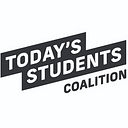College students faced food insecurity before COVID-19. It’s time for sustainable change.
By Carolina Espinal, 2019–2020 LEDA Policy Corps
When prospective students toured universities prior to the pandemic, they were offered a glimpse of vibrant dining halls filled with students indulging in an array of food choices. What they didn’t get to see were the large number of students going hungry and suffering in silence just footsteps away in their dormitories. But it is happening.
Now, the cascading effects of COVID-19 have brought sustained attention to the inequities inherent in higher education, particularly around the rates of basic needs insecurities. Since 1985, average tuition and fees at public and private institutions have more than doubled after accounting for inflation. The annual cost at many private colleges today has reached $70,000 — and the number continues to rise. At face value, the price tag seems intimidating, but what’s even more alarming are the hidden costs of college that students are faced with despite having a good financial aid package. As Syracuse University increased its tuition, room and board rates, health and wellness fees, and student activity fees for the 2018–2019 academic year, I sought ways to lower costs even further. I decided to change my meal plan to the most affordable option offered: five meals per week.
I ordered a rice cooker, bought a one pound bag of rice, oil, and salt, and braced myself for the fall semester, knowing very well that I would inevitably max out my meal swipes. Because I only had five swipes per week, as opposed to the sustainable and recommended 21 meals per week, I began planning my meals strategically. At the start of every week, when the system reloaded my five new meal swipes, I opted for the meal-to-go option instead of physically eating in the dining hall. This meant I could request a disposable Tupperware, strategically fill it to the brim with food, take it back to my dorm room, and ration my food for the week accordingly. In the absence of meal swipes, communal kitchens in my residence hall, and money to purchase groceries, I relied on my rice cooker. But conserving my food beyond a few days was impossible, which meant I often fell asleep on an empty stomach. This acutely affected my mental health and emotional stability. I did not talk, or tell anyone, about my situation. During this time, my parents were in the process of filing their immigration paperwork, and I did not want to worry them.
My experience and the prevalence of food insecurity on college campuses are not anomalies. They are representative of the challenges many other BIPOC, first-generation, and low-income college students, as well as children of immigrants face, in their college journey. In a recent report examining the pandemic’s impact on college students, the Hope Center for College, Community, and Justice found that nearly three in five students lacked adequate access to food or housing. Specifically, around food insecurity, the report revealed that 32 percent of student respondents at two-year institutions and 24 percent at four-year institutions said they had cut the size of their meals or skipped meals altogether because there was not enough money for food. Other research has confirmed the link between food insecurity and lower academic performance, grade point averages, and poor health — effects that underscore just how pervasive and paralyzing food insecurity is. And, in the wake of the pandemic, the challenges for students experiencing basic needs insecurity, like food and housing insecurity and homelessness, have been exacerbated.
As institutions attempt to recover from the enduring effects of the coronavirus pandemic, they must prioritize confronting the long-standing epidemic of food insecurity. University-level initiatives can include food pantries, programs that allow students to donate meal swipes, and other efforts that confront episodic food insecurity by providing food stipends to students who stay on campus during shorter breaks. Aside from these initiatives, campuses can create forums that encourage dialogue around food insecurity in order to gauge student-specific needs and to learn more about intersecting issues that aggravate students’ already precarious situations. All of these efforts are attainable. Prior to 2008, only four campus food pantries existed in the College and University Food Bank Alliance’s (CUFBA) network. By early 2019, CUFBA had over 700 members.
Lack of access to food, rather than the unavailability of food, is the critical issue impacting students in college campuses across the country, and yet it has not received the attention it warrants. Federal data and statistics tracking food insecurity among college students remain largely nonexistent, which complicates efforts intended to accurately measure trends and to implement far-reaching initiatives that address college food insecurity. The most recent report from the Government Accountability Office determined that 57 percent of students at risk of food insecurity, about two million potentially eligible students, did not receive SNAP benefits in 2016, largely due to a lack of information and knowledge about eligibility. Fortifying and disseminating information about student SNAP eligibility will be instrumental in mitigating food insecurity. But that is only half the battle.
Under its December COVID-19 relief package, Congress expanded SNAP eligibility to low-income college students by temporarily waiving the student work requirements. Under the new criteria, students who are eligible for federal or state work-study programs or who have an expected family contribution (EFC) of $0 are eligible for SNAP. While these new provisions were necessary to confront immediate challenges, SNAP benefits should be permanently extended to college students with demonstrated need and shouldn’t be contingent on an untenable work requirement.
The most immediate, achievable step is to foster a dialogue of urgency around college food insecurity within institutions, stakeholder conversations, and policy discussions. At every step, student voices must be centered and elevated. We cannot afford to continue remaining passive or silent about this issue.
